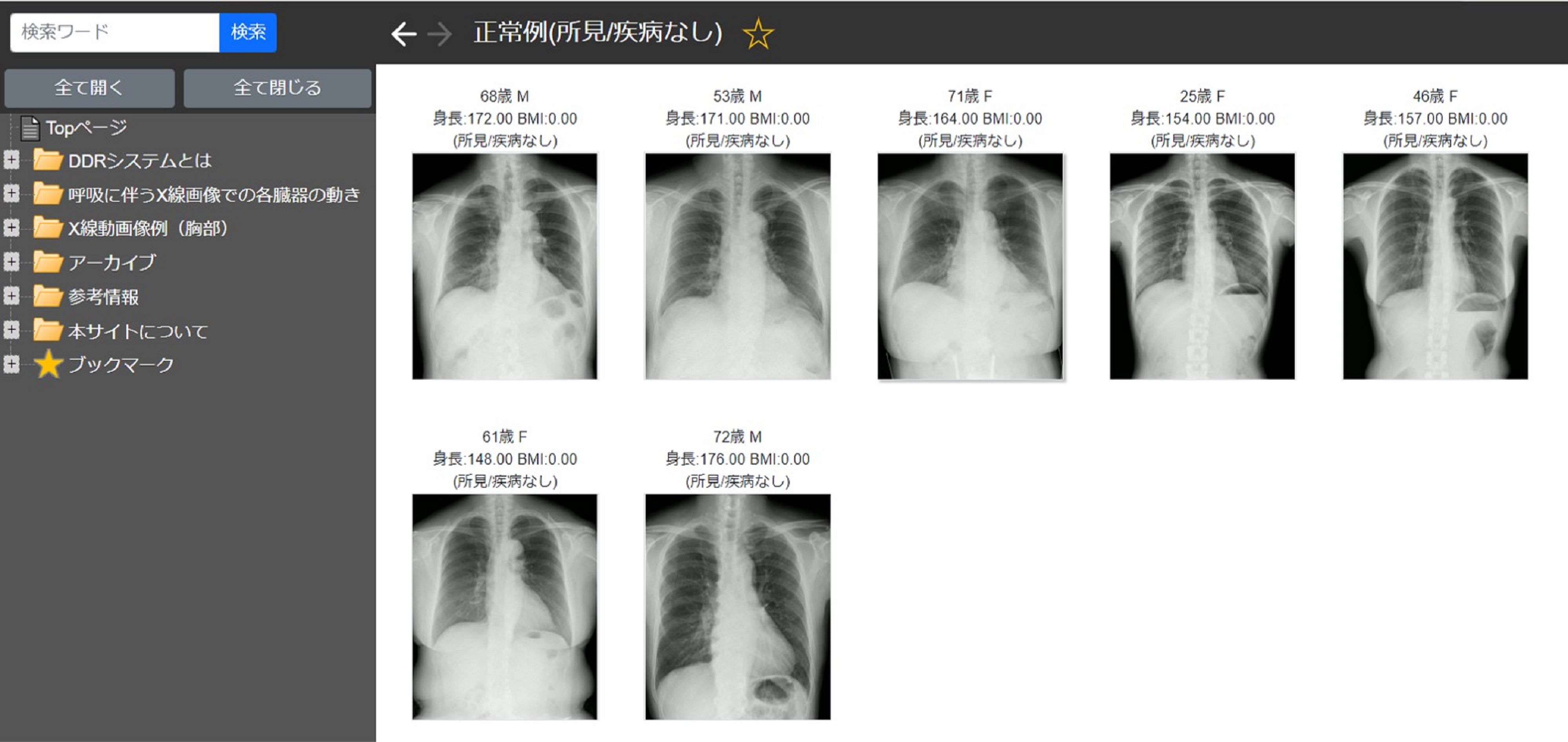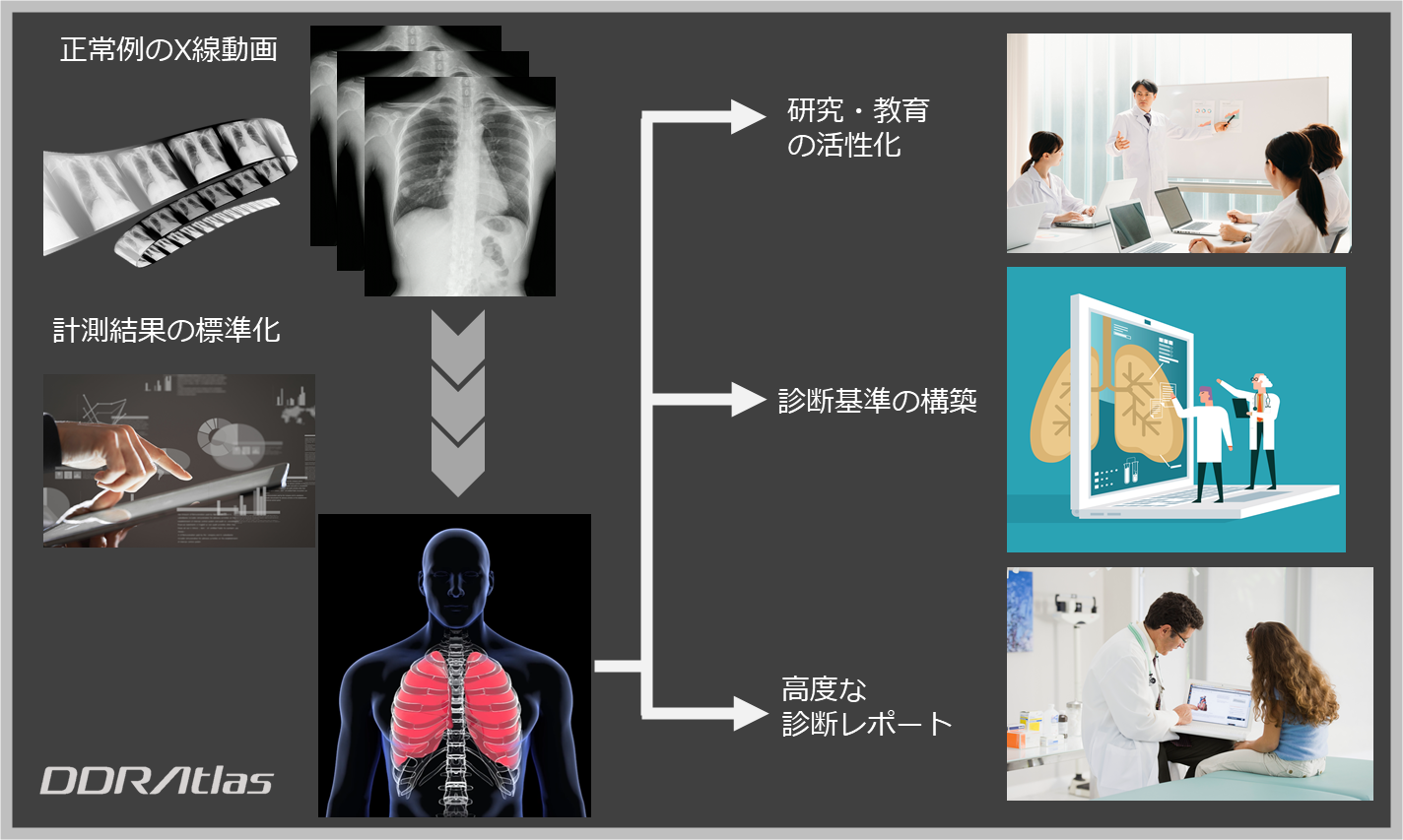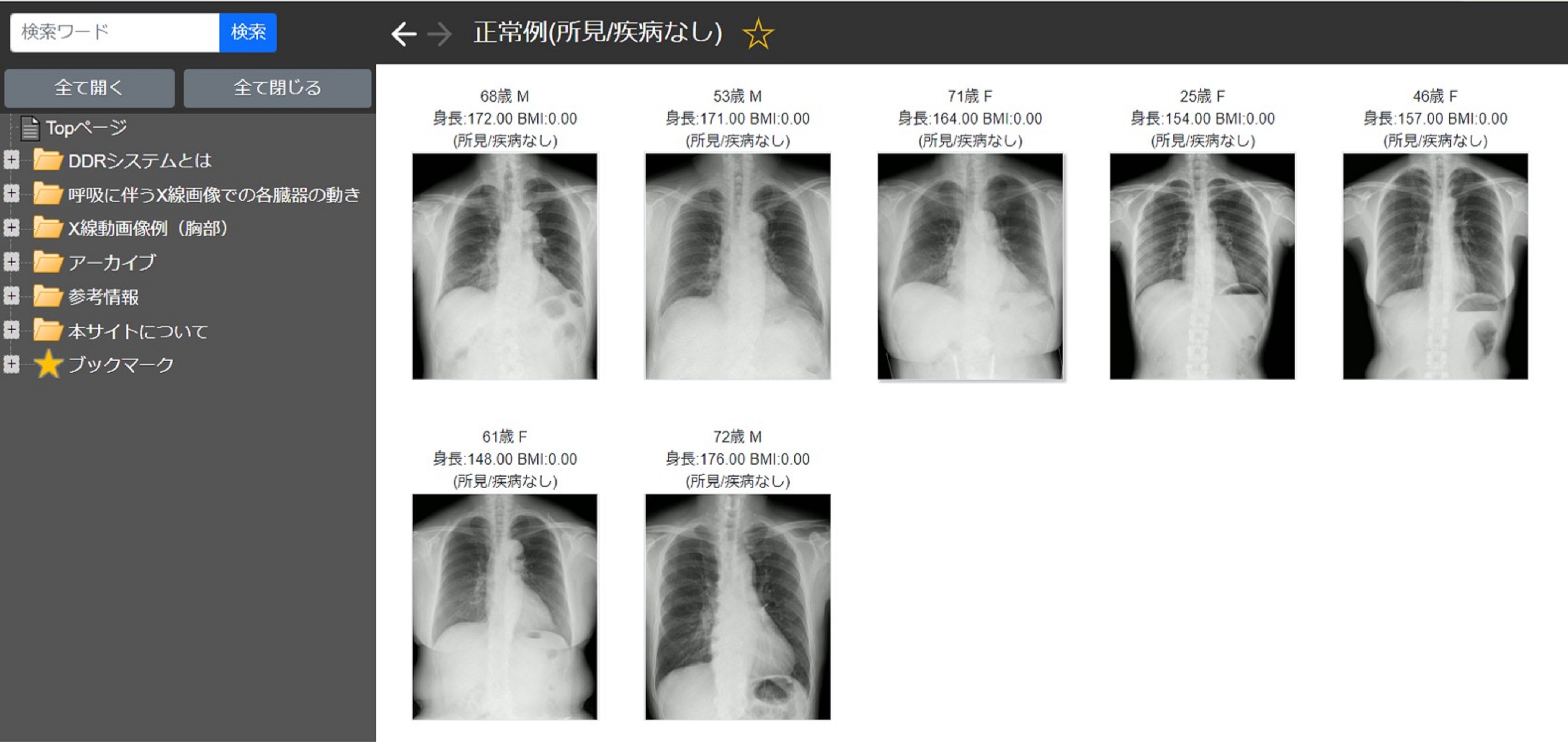News Releases
Konica Minolta Releases DDRAtlas Ver. 1.0, Dynamic Digital Radiography Atlas in Japan
Taking on a Challenge in New Dynamic Imaging Diagnosis for General Radiography
June 30, 2022
Tokyo (June 30, 2022) – Konica Minolta, Inc. (Konica Minolta) announced that the company has released DDRAtlas Ver. 1.0, which records normal cases, as the first part of Dynamic Digital Radiography DDRAtlas on its membership website*¹ in Japan.
DDRAtlas aims to establish diagnosis standards in the new field of dynamic imaging diagnosis. DDRAtlas Ver. 1.0, which represents the first part of the project, enables users to view and refer to normal cases, which are indispensable for establishing diagnosis standards, in dynamic digital radiography (DDR). By releasing DDRAtlas Ver. 1.0, Konica Minolta will promote communication with medical care professionals and increase the number of cases.

Background and Aim
Konica Minolta has been seeking to offer new diagnosis value by using a DDR system that can capture dynamic images by using a general X-ray system.
More than 100 DDR systems have been installed around the world, mainly at university hospitals, since the launch in 2018, and have changed the conventional view that general radiography examinations should be performed by static radiography. Clinical research and its applications have been expanding steadily. The usefulness of DDR in diverse areas has been reported by various departments, including radiology, respiratory medicine, thoracic surgery, cardiovascular medicine, and orthopedics, as well as intensive care and emergency medicine thanks to the recent release of the AeroDR TX m01 mobile X-ray system which offers wireless DDR. More than 40 papers have been published.
Based on this track record, Konica Minolta started building DDRAtlas, a digital atlas containing normal cases that serve as the basis of the diagnosis standards, in order to encourage the use of DDR systems at many more hospitals and clinics as new diagnosis equipment that can contribute significantly to medical care offered by physicians. As a result, the company has now released DDRAtlas Ver. 1.0.
Konica Minolta will support DDR-based diagnosis through the use of DDRAtlas to establish new dynamic imaging diagnosis in general radiography.
About DDRAtlas
DDRAtlas systematically integrates the in-vivo movement information of normal cases in DDR to help physicians understand DDR more deeply and study research questions.*² DDRAtlas is accessible from anywhere using a PC or smartphone. As an unconventional diagnosis tool, DDR is expected to improve the quality of medical care.

In the development of DDRAtlas, guidance was received from the following physicians as supervisors.
DDRAtlas supervisors:
Takeshi Isobe, MD, PhD (Department of Respiratory Medicine)
Professor, Department of Internal Medicine, Division of Medical Oncology & Respiratory Medicine, Shimane University Faculty of Medicine
Atsuko Kurosaki, MD (Department of Radiology)
Director, Department of Radiology
Japan Anti-Tuberculosis Association, Fukujuji Hospital
Hiroto Hatabu, MD, PhD, FACR (Department of Radiology)
Brigham and Women’s Hospital, Professor of Radiology, Harvard Medical School
Shoji Kudoh, MD, PhD (Department of Respiratory Medicine)
Representative, Board of Directors, Japan Anti-Tuberculosis Association
Improvement of Diagnosis Value through Dynamic Radiography Analysis
The DDR system consists of the previously released dynamic radiography analysis workstation KINOSIS and the cassette-type digital radiography system AeroDR fine motion. It enables radiography using a general X-ray system as in the case of conventional general radiography of the chest. General Radiographic System RADspeed Pro of Shimadzu Corporation is used as the general X-ray system.
This system generates dynamic images by continuously displaying X-ray images captured by continuous irradiation of pulse X-rays. The captured dynamic images are processed by KINOSIS to improve visibility and quantify the movement of in-vivo structures, making it possible to offer more information, which is difficult to obtain from conventional static radiography, in X-ray examinations. The DDR system, which enables low-dose radiography compared to CT, is expected to improve diagnosis accuracy in early-stage examinations and help identify lesions sooner, while reducing the burden on patients.

Konica Minolta will continue to expand the scope and number of cases in DDRAtlas and spread the DDR system around the world. The company will continuously strive to visualize vital functions and raise the quality of medical care.
*1:DDR membership site:https://www.konicaminolta.jp/healthcare/ddrms/index.html (in Japanese)
*2:Questions and issues that serve as research propositions regarding treatment and prevention. They are targets of clinical research. The research results are answers to research questions.
KINOSIS is the Japanese commercial product name of dynamic radiography analysis workstation Konica Minolta DI-X1.
AeroDR fine motion is the commercial product name of SKR3000.
CS-7 is software for image-processing controllers, a component of SKR 3000 and AeroDR SYSTEM 2.

